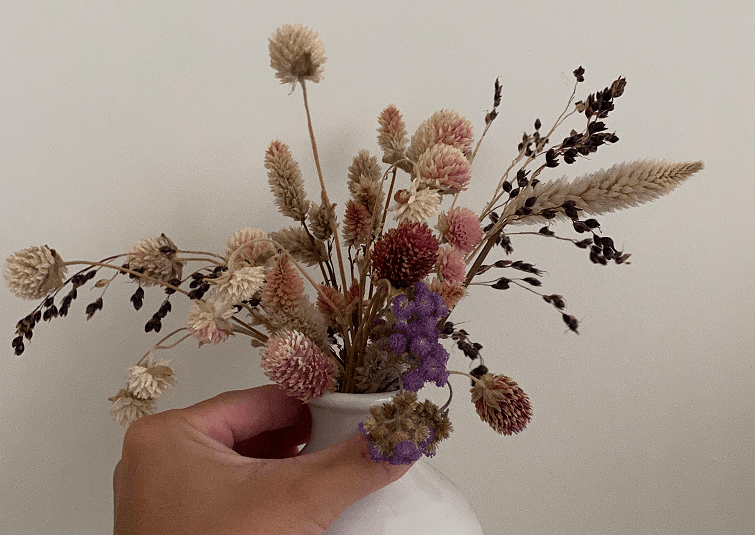This site uses cookies – Learn more.
The Art of Drying Cut Flowers
The Art of Drying Cut Flowers
Drying cut flowers is a great way to extend their life and beauty. You can keep them in a vase to make winter indoors a little more cheerful, or create a wreath to welcome visitors at your front door.
Many of the flowers in our Spring Forward, Into Summer exhibition were trialed for their ability to be dried. Not all flowers will hold their color or delicate shape once dried, so it’s important to try out a few species to see which ones work best. Gomphrena, Eryngium, and lavender are all good candidates for drying. And if you have any extra herbs at the end of the season, they can be dried for use in winter cooking or in a potpourri!
There are a few different methods that can be used when drying your blooms. Drying silica is good for projects that require your flowers to hold their actual shape. Plant presses, on the other hand, flatten and make perfect, delicate specimens for coaster-making projects or framed wedding flowers. You can also try hanging whole flowers upside down, by their stalks, in a cool, dry room away from direct sunlight. The drying process for each of these can take anywhere from one week to one month.
It’s best to know ahead of time what you want to use your flowers for before you dry them. If you’re unsure, then drying them upside down is usually a safe choice. This way, once they’re dry, you can use them whole or break flattened petals off for delicate jar displays.
You can also mix your dried flower stalks into fresh arrangements throughout the year. Any way you decide to use dried flowers, they will be sure to brighten up a space!








